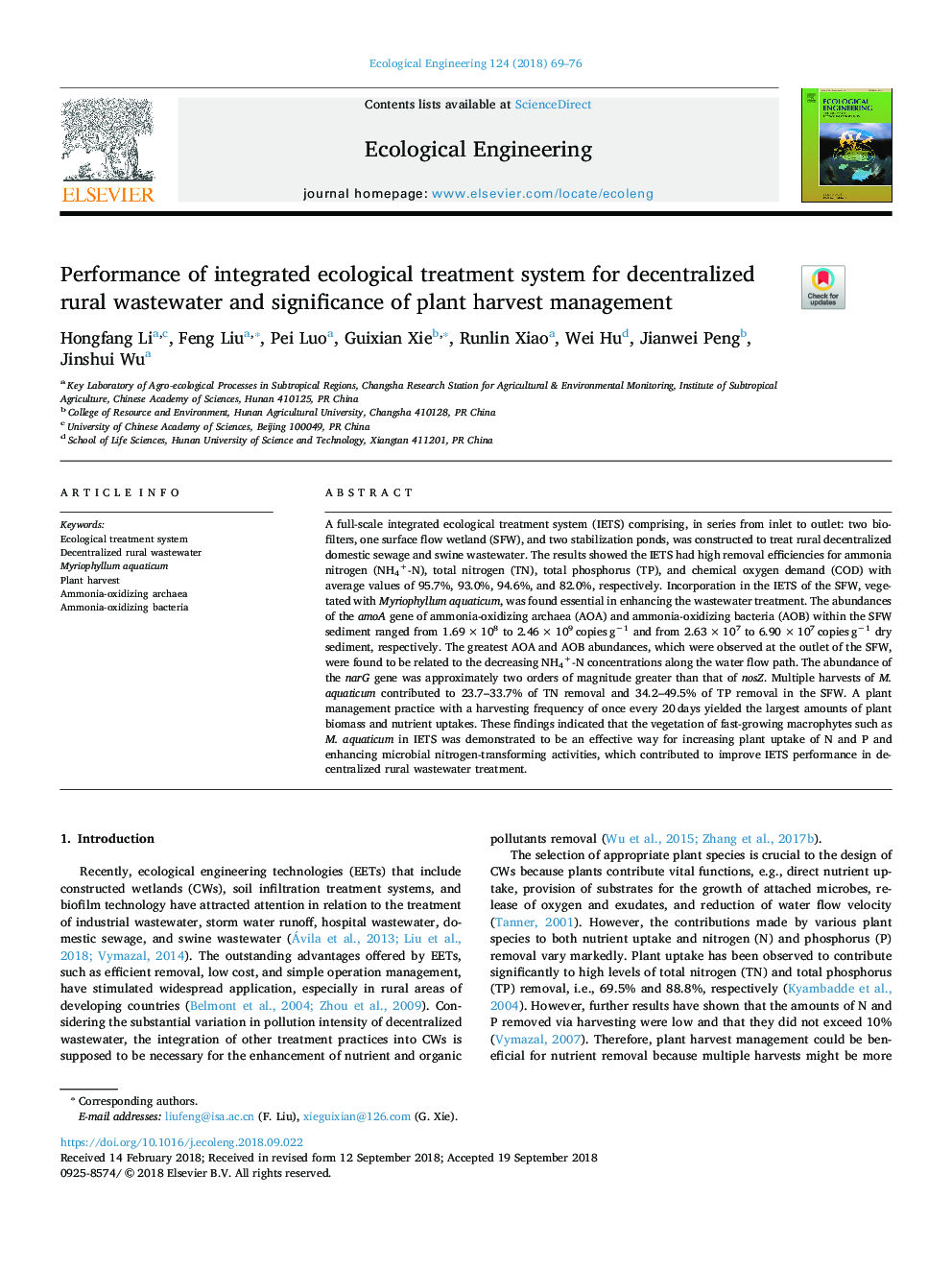| Article ID | Journal | Published Year | Pages | File Type |
|---|---|---|---|---|
| 11025199 | Ecological Engineering | 2018 | 8 Pages |
Abstract
A full-scale integrated ecological treatment system (IETS) comprising, in series from inlet to outlet: two biofilters, one surface flow wetland (SFW), and two stabilization ponds, was constructed to treat rural decentralized domestic sewage and swine wastewater. The results showed the IETS had high removal efficiencies for ammonia nitrogen (NH4+-N), total nitrogen (TN), total phosphorus (TP), and chemical oxygen demand (COD) with average values of 95.7%, 93.0%, 94.6%, and 82.0%, respectively. Incorporation in the IETS of the SFW, vegetated with Myriophyllum aquaticum, was found essential in enhancing the wastewater treatment. The abundances of the amoA gene of ammonia-oxidizing archaea (AOA) and ammonia-oxidizing bacteria (AOB) within the SFW sediment ranged from 1.69â¯Ãâ¯108 to 2.46â¯Ãâ¯109â¯copiesâ¯gâ1 and from 2.63â¯Ãâ¯107 to 6.90â¯Ãâ¯107â¯copiesâ¯gâ1 dry sediment, respectively. The greatest AOA and AOB abundances, which were observed at the outlet of the SFW, were found to be related to the decreasing NH4+-N concentrations along the water flow path. The abundance of the narG gene was approximately two orders of magnitude greater than that of nosZ. Multiple harvests of M. aquaticum contributed to 23.7-33.7% of TN removal and 34.2-49.5% of TP removal in the SFW. A plant management practice with a harvesting frequency of once every 20â¯days yielded the largest amounts of plant biomass and nutrient uptakes. These findings indicated that the vegetation of fast-growing macrophytes such as M. aquaticum in IETS was demonstrated to be an effective way for increasing plant uptake of N and P and enhancing microbial nitrogen-transforming activities, which contributed to improve IETS performance in decentralized rural wastewater treatment.
Related Topics
Life Sciences
Agricultural and Biological Sciences
Ecology, Evolution, Behavior and Systematics
Authors
Hongfang Li, Feng Liu, Pei Luo, Guixian Xie, Runlin Xiao, Wei Hu, Jianwei Peng, Jinshui Wu,
